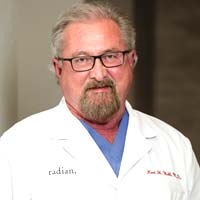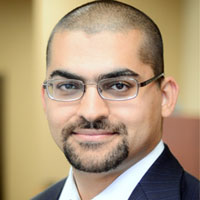New Regenerative FUE Hair Transplant Conducted
Follicular Unit Extraction, also known as FUE, is the
procedure involved in removing donor hair follicles during a hair transplant
that will be surgically moved to bald, problem areas of the scalp.
This is arguably the most popular method for a hair
transplant and now, a newly announced technique might make it even easier, and
the results better.
Amir Yazdan M.D.,the founder of Modena Hair Transplant
Institute, has performed a new technique with FUE that he believes is minimally
invasive when it comes to harvesting hair follicles. Mainly through better
selection of only hair follicles, not the fat, or regenerating cells from the
donor site.
The minimally invasive technique, which Yazdan has named,
“Minimal Depth FUE,” harvests hair follicles to allow regeneration of the donor
zone using Acell (an FDA approved cellular regeneration produc) & PRP
(a procedure in which a small amount of blood is taken from your arm, processed
and activated.)
Traditional methods, still employed at a number of surgical
clinics, use what look like a hole punch to extract grafts of hair for
transplants. Some even make use of more percise and easier to use robot tools.
The problem with these however is they do not take care to
leave behind adipose tissue/fat from the follicle. This is necessary for
helping to grow hair again in the donor region. It also leaves less room for
scarring or any deformations in those donor areas.
As Dr. Yazdan explains it, "In a Hair Transplant
procedure the goal is to transplant hair, not fat. With my new minimally
invasive FUE technique, it ensures that only the hair is extracted leaving the
regenerating stem cells behind."
"With my new techniques and the use of Acell and PRP
(Platelet Rich Plasma), I have seen greater than a 50 percent
regeneration of extracted follicles in the donor zone."
Dr. Yazdan offers this procedure in both Orange County and
Las Vegas.
Hairfear - 5-8-2014
Frequently asked questions about hair transplant procedures
How much does a hair transplant cost?
Hair transplants can vary in price based off of the area in the world that you are interested in getting a hair transplant as well as the size of the area where you may need a hair transplant. Experienced doctors in the United States will often charge some of the highest prices for a hair transplant worldwide and this is why so many travelers make the move to other parts the world like Turkey, India, Thailand, Mexico...etc for their hair transplants.
Will a hair transplant hurt?
Although hair transplants may look like a particularly
unpleasant or painful experience is actually very little discomfort involved
with the surgery itself. Hair transplants are always done under an anesthetic so there's absolutely zero pain during the treatment itself. Many people actually relate the process as being very similar to going to the dentist for filling or root canal. Mild pain can persist over the course of postop treatment but he generally just resumes for a few days.
Who can deliver the best surgery?
It's usually best to consider working with surgeons who have and IAHRS certification or international alliance of hair restoration surgeons recognition. IAHRS can often deliver recommendations for the best surgeons in each particular area.
Is this scarring noticeable?
Any type of hair transplant will require the use of incisions throughout the scalp. There can also sometimes be a small scar from the donor area towards the back of the scalp. Asking to look at photos of the surgeon's previous work will help you to see roughly how bad the scarring could be. In most cases an experienced professional can limit the look of scarring and noticeable marks from the surgery.
How long does it take for the hair to grow?
In most cases hair growth will start within eight months and you can start to see a full effect from the hair transplant after a full year. The initial signs of growth can usually start between 3 to 4 months after the surgery.
Are the results permanent?
The hair follicles that are transplanted are generally the ones which are genetically resistant against the symptoms of baldness. As long as you receive hair loss treatment later in your life after the symptoms of balding have started to subside, you can have a better chance at permanent results.
While everyone know you've had surgery?
If you want to limit the chance that people may find out about your surgery it's important to give at least three weeks of healing as the surgical area will be affected and red just after surgery. After around a month of healing it can look far less noticeable. You could consider wearing a hat while time passes or opting for some extra time off if possible.
How long should I rest after surgery?
It's recommended to rest for at least a few days after surgery so that your body can recover. Trenton to over exert yourself and limit sexual activity, running in the gym for around 10 days after surgery.
Is it possible to lose more hair as a result of surgery?
There is always a chance of shock loss which happens when the hair is weak and miniaturizing after the surgery. As long as the surgeon is choosing the correct hair follicles and performing the surgery well it's possible to minimize the chance of this happening however.
Will I need another hair transplant?
The need for another transplant really depends on the individual. With a solid foundation surgery and working to potentially bolster results with drug therapy, you can improve the stability of the hair that was transplanted as well as prevent further loss. Getting a hair transplant early
on in your 20s or early on in life could lead to needing long-term transplants as hair loss can be progressive.







